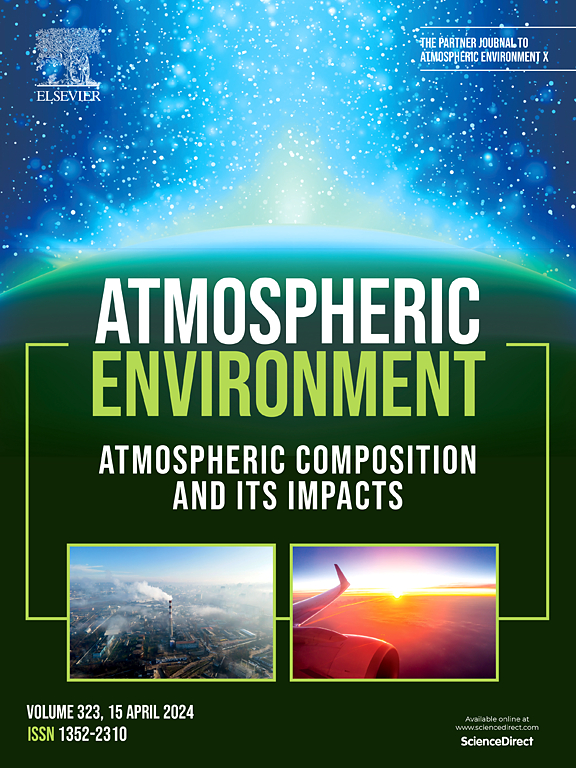Characteristics of elevated PM2.5 events driven by enhanced organic compound concentrations in a South Korean residential city
IF 4.2
2区 环境科学与生态学
Q2 ENVIRONMENTAL SCIENCES
引用次数: 0
Abstract
Organic matter is often the largest contributor to PM2.5, but its emission sources and formation pathways are very diverse, making it challenging to identify the causes of high concentration episodes. In this study, four groups of organic compounds that contribute to PM2.5, including sugars, dicarboxylic acids (DA), fatty acids (FA), and pinonic acid (PNA) were measured in a medium-sized residential city in South Korea during three seasons, where high PM2.5 concentration episodes often occur. The average concentrations of PM2.5 and total quantified organic matter (∑17 qOM) was 21 ± 12 μg m−3 and 391 ± 183 ng m−3, respectively. The concentration of ∑sugars was higher during the colder seasons compared to the warm season (32 ± 18 ng m−3, 240 ± 109 ng m−3, and 231 ± 105 ng m−3 in the warm, transition, and cold seasons, respectively). In contrast, ∑DAs exhibited the opposite seasonal trend (234 ± 164 ng m−3, 114 ± 103 ng m−3, and 140 ± 103 ng m−3 in the warm, transition, and cold seasons, respectively). The contribution of ∑FA to qOM was relatively consistent (13.1% in warm season to 15.6% in colder seasons). PNA, a biogenic secondary organic aerosol tracer, had a significantly higher concentration during the warm season (16 ± 13 ng m−3 in warm season vs. 3 ± 3 ng m−3 in colder seasons). A strong correlation between ∑sugars and ∑FAs (r = 0.72) was observed only in the transition season, when crop residue burning was determined to be important. Unsaturated FAs were likely to be efficiently aged during the cold season since the ratio of C18:0 to C18:1, a tracer for the age of aerosol, increased. DAs were generally dominant in the warm season, but also significantly increased during most high PM2.5 concentration episodes (HCEs; 306 ± 199 ng m−3), which primarily occurred in the colder season. During HCEs appearing in colder season, the ratio of malonic acid (C3) to succinic acid (C4), a tracer for photochemical aging of air masses, also increased, suggesting that the secondary aerosol formation and aerosol aging significantly enhanced PM2.5 concentration.
求助全文
约1分钟内获得全文
求助全文
来源期刊

Atmospheric Environment
环境科学-环境科学
CiteScore
9.40
自引率
8.00%
发文量
458
审稿时长
53 days
期刊介绍:
Atmospheric Environment has an open access mirror journal Atmospheric Environment: X, sharing the same aims and scope, editorial team, submission system and rigorous peer review.
Atmospheric Environment is the international journal for scientists in different disciplines related to atmospheric composition and its impacts. The journal publishes scientific articles with atmospheric relevance of emissions and depositions of gaseous and particulate compounds, chemical processes and physical effects in the atmosphere, as well as impacts of the changing atmospheric composition on human health, air quality, climate change, and ecosystems.
 求助内容:
求助内容: 应助结果提醒方式:
应助结果提醒方式:


